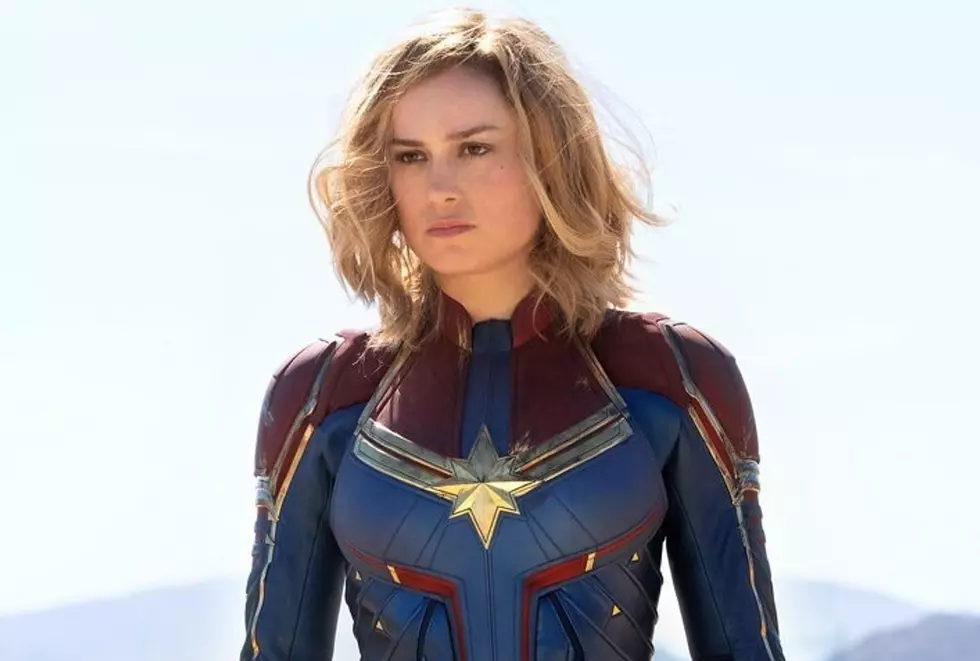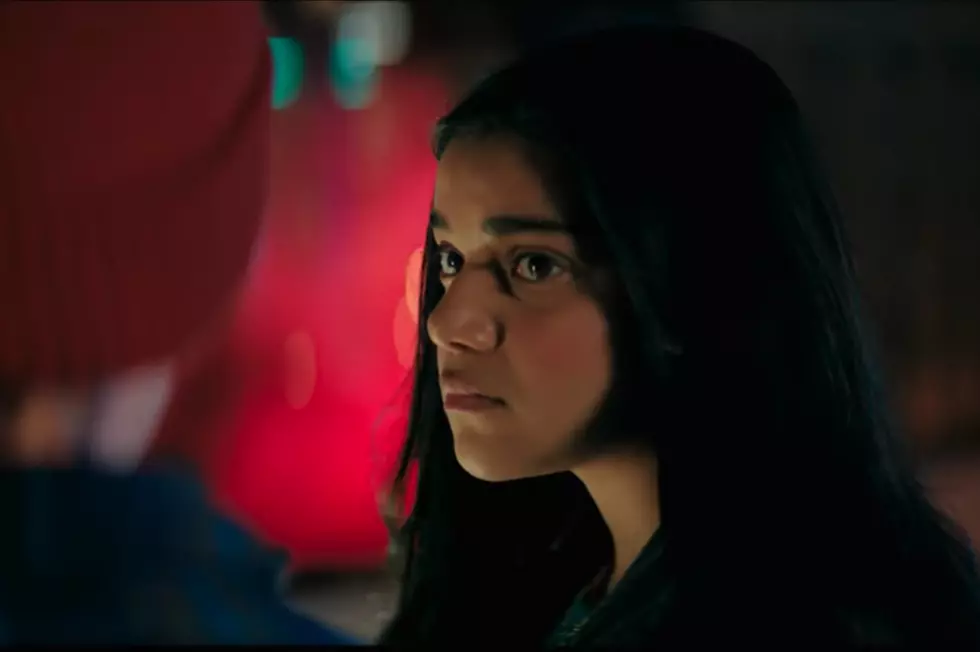
The Messed-Up History Of Marvel’s ‘Captain Marvel’ And Why It Doesn’t Matter

With the debut this month of newly ranked Captain Marvel Carol Danvers, Marvel has officially published stories featuring seven -- count 'em, seven -- versions of the character, and that's not even counting any of the various alternate-universe incarnations. Why so many iterations? Well, basically, Marvel will lose its trademark on the name "Captain Marvel" if the company doesn't publish a comic with that title every few years. But even then, why couldn't they trot out the same version of the character every odd-numbered year or something? Because since the death of the original Captain Marvel in 1982, Marvel hasn't had a Captain Marvel with staying power.
Until now.Carol Danvers has been a part of the Marvel Universe for nearly as long as the original Mar-Vell. She debuted in 1968, just a few months after Mar-Vell's first appearance in late 1967. Though she's had a few other names over the years (remember when she was "Binary," not because she turned into a robot, but because the Brood did some crazy experiments on her? Or when she agonized over changing her name to "Warbird" in Avengers, not long before they kicked her out for being an alcoholic?), Danvers has spent most of the past 35 years with the name "Ms. Marvel."
Her DNA melded with with the original Captain Marvel's after the accidental overloading of a Kree matter-shaping weapon, and she ended up with Kree-like powers. You can't get powers in a more Marvel-like way, really. It makes one wonder how nobody made this leap until now. (Brian Michael Bendis kinda did in House of M, actually.)

But before we get there, let's talk about the weird story of how Marvel ended up with a character named Captain Marvel to begin with. Oddly enough, it's because of DC Comics. In 1941, DC sued Fawcett Comics over that company's Captain Marvel character (the one who said, "SHAZAM!") claiming that he infringed on DC's Superman copyright. The case dragged on for years, with Fawcett continuing to publish their Captain Marvel comics throughout. Finally, in 1952, the U.S. Court of Appeals ruled that Captain Marvel was indeed a Superman rip-off. It also found DC hadn't done the due diligence to uphold its Superman copyright, which meant the court couldn't actually stop Fawcett from publishing the comics.
Even so, sales of superhero comics were taking a nosedive in the early 1950s, and Fawcett wasn't interested in paying for further court proceedings. The company settled out of court with DC and opted to cease publication of not just Captain Marvel, but all of its superhero books.
The name Captain Marvel was available, and by the time Marvel Comics was really taking off in the mid-1960s, it was in the company's interest to snatch up any name with "Marvel" in it. So they trademarked it. Marvel didn't actually publish a Captain Marvel comic, however, until DC made some noise about bringing back the Fawcett character, which they'd licensed. DC just couldn't call the book Captain Marvel or advertise the name, hence the Shazam! title.
That's how both companies could have characters named Captain Marvel, and it put Marvel in a peculiar predicament: Copyrights last for decades upon decades, but trademarks lapse if their owners don't use them, which meant Marvel had to keep putting out a book with the title Captain Marvel every once in a while or risk the mark expiring, which would surely result in DC publishing a Captain Marvel comic (as opposed to a Shazam! comic).

Marvel intermittently published the adventures of the original Captain Marvel, the Kree soldier/spy Mar-Vell who came to care for humanity, through the end of the '70s. Jim Starlin wrote and drew the comic for much of that time, but it never really took off in terms of sales. Costume changes, the inclusion of sidekick Rick Jones, character deaths and revamps weren't enough to maintain interest in the book. It wasn't until Starlin killed off Mar-Vell himself in the graphic novel The Death of Captain Marvel in 1982 that the character had a real, landmark story. Despite some overbearing religious imagery, The Death of Captain Marvel took a sensitive, poignant approach to Mar-Vell's battle with cancer, as well as his relationships with other heroes. There's a reason why it's a story that's stood the test of time, and it's a key reason lots of readers know of Mar-Vell at all.
Mar-Vell has made cameos here and there in the Marvel Universe over the 30 years since, but, quite rightly, Marvel has been hesitant to undo the one Mar-Vell story a lot of people feel strongly about. This meant the company would have to put another character in the Captain Marvel role or get by on reprints (which it did for a portion of the 1980s) to keep its trademark on the name.

Monica Rambeau, a harbor patrol leiutenant who got superpowers from being bombarded by extradimensional energy (what else would it be?) would hold the title of Captain Marvel for 13-plus years. She performed a respectable stint as an Avenger, too, even leading them at one point. But for whatever reason, Marvel wasn't too crazy about backing an ongoing series for her to star in. Monica only got two one-shots with the Captain Marvel title before giving it up to Mar-Vell's artificially-aged son, Genis-Vell, in time for him to star in a short Captain Marvel mini-series in the mid-'90s.
The fact that lots of news reports introduced Carol Danvers as the first female Captain Marvel meant that Rambeau, sadly, didn't make a huge impact -- at least not as Captain Marvel. She would later go on to lead Warren Ellis and Stuart Immonen's Nextwave, where she was considerably more awesome than anyone else on the team.

Speaking of Genis, he originally had the name "Legacy," a ponytail and one of those '90s headgear things everybody seemed to have for a while. By the time he got a Peter David-penned ongoing series in 1999, all that stuff was happily gone. Rick Jones returned, sharing a body with Genis in what played as sort of a space-adventuring Odd Couple. But, again, sales dipped and Marvel relaunched the book as part of the infamous U-Decide promotion.
In Genis' second volume, Captain Marvel focused on his increasingly dangerous insanity, which led to him destroying the universe. Yes, that happened. Soon after Genis recreated the universe with the help of Entropy and Epiphany, the title was finally canceled, though not before he got the chance to kill his own son as an infant (comics, everybody!).

The next (or I guess concurrent) Captain Marvel was Phyla-Vell, Genis' sister -- whom he created from whole cloth when he remade the universe. Turns out Genis had also recreated his mother, Elysius, who wasn't too happy with him, so she gave the Captain Marvel title to his sister (parents, am I right?). Genis wouldn't have it, though. By the time she got her own series, Phyla had taken yet another character's name, Quasar, which she also lost eventually.

By 2007, Marvel needed another Captain Marvel book, so they kind of cheated a little. Before the Secret Invasion crossover event, the company teased the return of Mar-Vell, only to reveal in the The Return one-shot that this Mar-Vell was actually a shape-shifting Skrull who just thought he was the original Captain Marvel. He fought his way through some members of his own race for five issues, quickly kicked the bucket and passed the name on to the next guy.

That next Captain Marvel was the alternate-universe Kree Noh-Varr, introduced in Grant Morrison and JG Jones' landmark Marvel Boy series in 2000. Originally a sort of anarchist, punkish anti-hero who hated humanity, Marvel never really knew what to do with him. He's been brainwashed, he's fought Skrulls, and he's been an Avenger. Eventually, after encountering the dying Skrull who thought he was Captain Marvel, Noh-Varr ended up on Norman Osborn's Dark Avengers team as Captain Marvel, with his personality almost completely different from his original incarnation. Noh-Varr left the team after finding out it was composed of mostly -- heaven forfend! -- criminals. Before long, he lost the Captain Marvel title and had become everything Marvel Boy wasn't. Now called Protector, he was a Captain Marvel without a book, despite Marvel's main reason for ever having a character with that name in the first place was so that it could publish a comic called Captain Marvel.

Which brings us back around to Carol Danvers, who's headlining the first Marvel comic with the title Captain Marvel since mid-2008 (cut it close there, folks)! She's got a lot going for her. For one, she's being written by a great writer, Kelly Sue DeConnick, whose first two issues with the new Captain Marvel (Avenging Spider-Man #9 and Captain Marvel #1) have been fun, set up a nice emotional arc for the character, and proven she can stand next to two of Marvel's flagship characters -- Spider-Man and Captain America -- and hold her own.
A lot of the problems other versions of Captain Marvel had, Danvers doesn't. She's not saddled with the b-or-c-lister status Mar-Vell had, problems he actually had to die to overcome. Carol's getting a bigger push from Marvel than Rambeau ever did, and has already proven to be more than just a blip or a stunt, like Noh-Varr, the Skrull and Phyla were.
The last Captain Marvel who hung around for a while, Genis, had the misfortune of starring in a pretty good comic book that had a relatively high barrier to entry. You had to know of his dad, his previous relationship with Rick Jones, a bunch of stuff about the Kree Empire, the concept of "cosmic awareness" and so forth. Carol Danvers is a character with a fair amount of baggage of her own, but DeConnick said in her War Rocket Ajax interview that she's not going to wallow in that. ("Ignore the broccoli people," she said her husband, the writer Matt Fraction, advised her. That means Marcus will stay safely in the past.) And so far, all you've needed to know about Captain Marvel is that there used to be one. That's it.
It might be a tough balance, trying to have what amounts to a clean continuity slate while banking on an established character and an established name, but it's working so far in the new Captain Marvel. Let's hope she's the only Captain Marvel the company she's named after will need for a good long while.
More From ComicsAlliance






![Marvel Legends’ Latest Spider-Man Wave Builds a Dream of a Sandman Figure [Review]](http://townsquare.media/site/622/files/2017/03/IMG_1721.jpg?w=980&q=75)

![Image To Add 25 Complete And Ongoing Series To Comixology Unlimited [Exclusive]](http://townsquare.media/site/622/files/2017/02/Image-Featured1.png?w=980&q=75)
